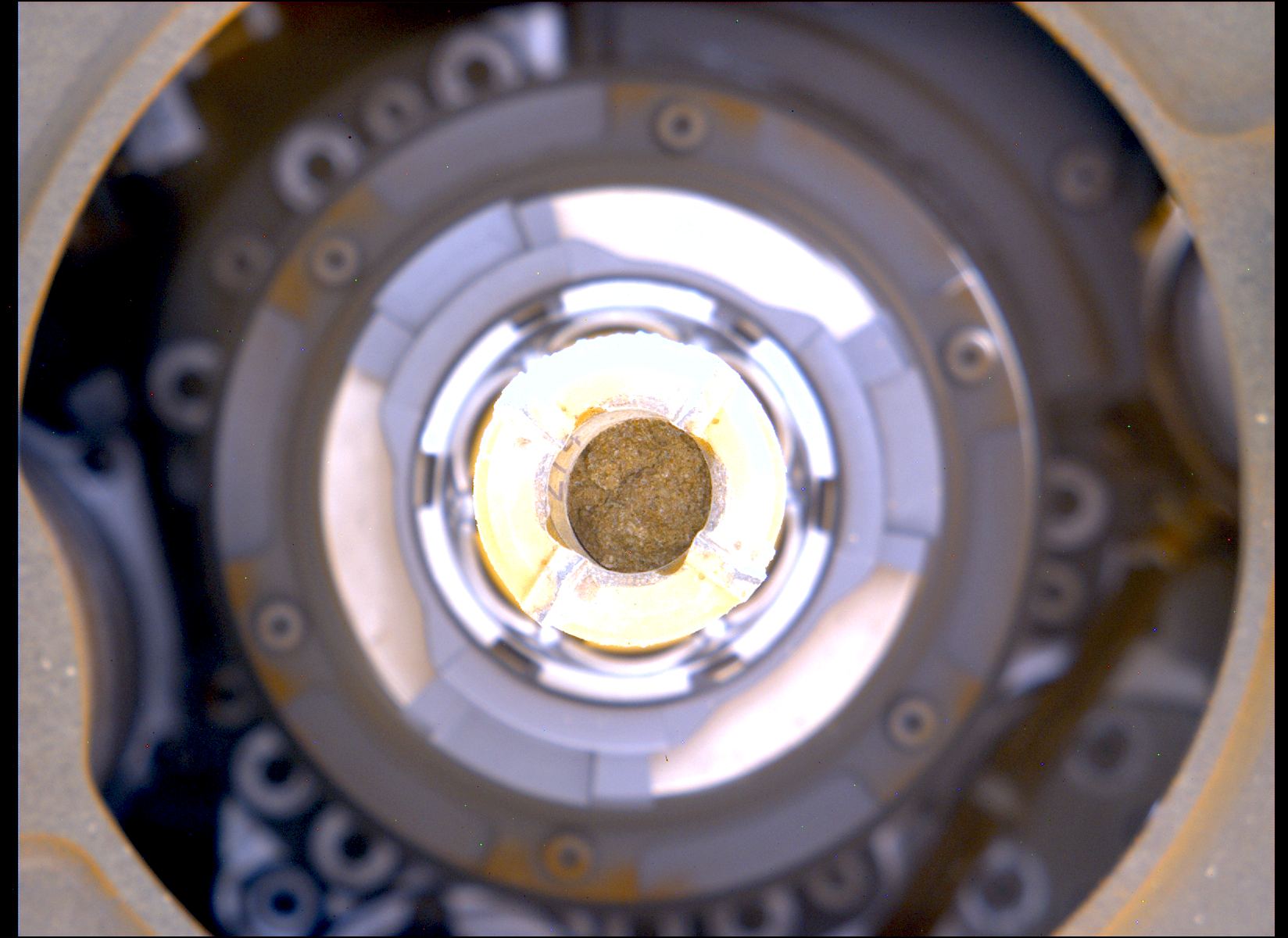On Thursday, March 30th, NASA’s Perseverance rover drilled and stored the first rock core sample of its newest science campaign. This is the sixteenth sample the rover has taken as part of the ambitious Mars Sample Return (MSR) mission, a collaborative effort between NASA and the European Space Agency (ESA) to retrieve Perseverance’s samples and bring them back to Earth. Once they arrive (expected to happen by 2033), scientists will analyze them using state-of-the-art machinery too heavy and cumbersome to send to Mars as part of a robotic mission.
Collecting samples as part of the first sample-return mission from Mars is one of the main objectives of NASA’s Mars Science Laboratory (MSL) program. It is hoped that these samples will provide new insight into the planet’s environment and the water cycle that shaped the surface and interior of Mars. Of particular interest is how Mars evolved from a warmer, wetter environment – as it was during the Noachian Era (ca. 4.1 – 3.7 billion years ago) – to the cold and dedicated place we see today. It is theorized that life could have emerged during this period. If true, then the analysis of these core samples could provide the first evidence that life once existed on Mars (and might still be there today).
Perseverance has also collected three witness tubes, similar to sample tubes but designed to capture molecular and particulate contaminants. These tubes are opened close to sample collection sites to “witness” the ambient environment, helping scientists to characterize the location where samples are obtained. Earlier this year, the rover deposited ten tubes as a backup cache on the Martian surface for retrieval by the MSR campaign. For this latest campaign, the rover is exploring a new formation at the top of the delta formation in the Jezero Crater.
Scientists have named this formation “Berea,” which they believe formed from rock sediment carried by a stream that once flowed into the crater. This stream was responsible for forming the fan-delta, which means that the material in this formation could have come from far beyond the Jezero Crater. This is one of the reasons why the science team considers it to be so promising. But as Katie Stack Morgan, the deputy project scientist for Perseverance at NASA’s Jet Propulsion Laboratory (JPL), related in a NASA press release, there is another reason why the spot is attractive.
“The second reason is that the rock is rich in carbonate,” she said. “Carbonate rocks on Earth can be good at preserving fossilized lifeforms. If biosignatures were present in this part of Jezero Crater, it could be a rock like this one that could very well hold their secrets.”
Carbonates are a type of sedimentary rock that forms from chemical interactions between minerals and water. The presence of these and other minerals that form in the presence of water is why the Jezero Crater and the Gale Crater (where Curiosity is currently exploring) were selected as landing sites. Essentially, these mineral deposits could provide scientists with a record of what the climate once looked like, allowing them to create a more complete geological record of Mars. Said Ken Farley, the W.M. Keck Foundation Professor of Geochemistry at Caltech and Perseverance’s project scientist:
“The Berea core highlights the beauty of rover missions. Perseverance’s mobility has allowed us to collect igneous samples from the relatively flat crater floor during the first campaign, and then travel to the base of the crater’s delta, where we found fine-grained sedimentary rocks deposited in a dried lakebed. Now we are sampling from a geologic location where we find coarse-grained sedimentary rocks deposited in a river. With this diversity of environments to observe and collect from, we are confident that these samples will allow us to better understand what occurred here at Jezero Crater billions of years ago.”

Now that the Berea sample has been cored and placed into the rover’s internal cache, Perseverance will move to its next drill site along the delta fan – a place the science team has named “Castell Henllys.” In addition to the 16 samples it has collected, Perseverance has also collected rock samples with its wheels. In February of 2022, the science team noticed that the rover’s left front wheel had picked up a “pet rock” and managed to hold onto it for months! The entire sample cache will be retrieved starting in 2030 with the arrival of the NASA MSR elements.
This includes the Sample Retrieval Lander, which Perseverance will deliver all the samples contained in its cache. A pair of Sample Recovery Helicopters (the same design as Ingenuity) will gather the samples the rover left on the surface. Once loaded aboard the Lander, the samples will be sent into orbit via the Mars Ascent Vehicle (MAV) and then collected by the ESA’s Earth Return Orbiter (ERO). This spacecraft will return the sample cache to Earth (by 2033 at the earliest) for analysis. The results will lead to all kinds of scientific breakthroughs and even demonstrate that life did exist on Mars billions of years ago.
Fingers crossed, the data could also help resolve where Mars’ water (and any remaining life forms) can be found today!
Further Reading: NASA

